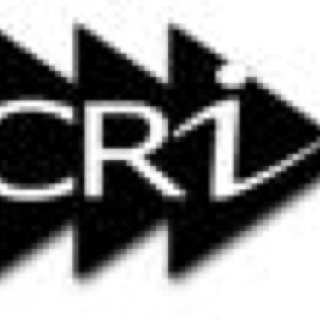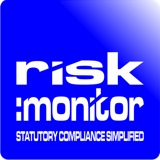Title Page
-
Conducted on
-
Prepared by
-
Location
-
-
Site:
Shene Sports & Fitness Centre
-
Date:
-
August 2019 – August 2020
Background
-
Regular fire alarm testing and maintenance is a requirement under health and safety legislation. Further information on the requirements can be found at . The Corporate Health and Safety Policy states that managers will ensure that the health and safety policy and procedures are implemented in the work places and amongst the work groups for which they are responsible. Ensuring the fire alarm systems are operating correctly in our premises is also part of our overriding duty of care to our staff and clients
-
There are two clear sections below that detail what is expected of managers and what the maintenance contractor will undertake. The requirements for managers do not require any prior special knowledge or expertise to carry out the checks. For example, a monthly inspection of a smoke detector requires nothing more than a visual check to see if there are any issues that would prevent the correct operation of the detector such as an excessive build up of dust, whether they have been painted over, or if there is any obvious damage to the detector
-
All tests and checks should be recorded in this log book
Contents
Daily Checks
-
These are basic checks that should be carried out on a daily basis. They do not need to be recorded
-
Inspect the Fire Alarm Panel for normal operation of the system
-
Check to make sure the panel is switched on (this is normally a green light on the panel indicating the system is ok, or operating in a safe condition
-
Check the panel to see if any faults are indicated (this is normally a buzzer sounding or a flashing light on the panel)
Weekly Checks
-
Test of the alarm system to check call points, sounders and door release devices. This is to test that the system is operating correctly
-
Test the manual call point by inserting the plastic test key into a call point to activate the alarm. These should be tested in strict rotation to ensure all equipment is functioning correctly. Note – If your alarm is linked to a monitoring centre please inform them prior to carrying out the tests. This will prevent unnecessary call outs to the fire service
-
Ensure hold open devices release and close fire doors fully with the activation of the alarm system (it can be easiest to test the nearest device closest to the call point being tested, but make sure all devices are tested in rotation)
-
Rather than testing each call point, sounder and automatic door release device every week it is acceptable to carry out the tests in rotation, provided that all call points, sounders and door releases are tested quarterly eg week one call point 1 is tested, and the sounders and door release devices are checked in that area; week 2 call point 2 is tested and so on
-
The shaded rows every 4 weeks are there to act as a reminder to complete the monthly checks as well
-
Managers / Responsible Person - Weekly Fire Alarm Checklist
-
Wk no
-
Date
-
Alarm call points and sounder activation
-
Automatic door release
-
Defect / Reason
-
Remedial action taken
-
Signed
-
Call point no
-
Location
Site & Foyer (1)
-
DC/LR
Studio 1
Fitness Suite
Studio 2
Boiler Room
Studio Corridor
Foyer
Foyer
Monthly Checks
-
Visual check of detectors for damage, unusual accumulation of dirt, heavy coats of paint and other conditions that may interfere with correct operation of the detector
-
Test the emergency lighting system (if installed) using the special key provided to activate the key switches for the emergency lighting system and ensure all the units are operating correctly (this will turn off the main lights, and just leave the emergency lights on)
-
Ensure that the fire extinguishers are in position, not discharged, or damaged. If they are fitted with a pressure indicator then check that the pressure is ok by reading the gauge (normally the gauge is clearly marked in colour to show whether the pressure is correct or not)
-
Check any other equipment like fire blankets are in position and are not damaged
-
Managers / Responsible Person - Monthly Fire Alarm Checklist
-
Visual Inspection of Detectors
Emergency Lighting System
Fire Extinguishers
-
Any Other Equipment
-
Detector no
-
Location
-
Item
-
Foyer Co2
-
Foyer Foam
-
Spin Studio Foam
Back Office
Back office
-
Spin Studio Co2
Front Desk
Front office
-
Fitness Suite Foam
Gym R/S
-
Fitness Suite Co2
-
Studio 2 Foam
Studio 1 R/S
-
Female Change
-
Studio 2 Co2
Studio 1 L/H
Female Toilets
-
Boiler Room Foam
-
Gym (Free Weights)
-
Male Change
-
Boiler Room Co2
Store Cupboard
-
Studio Corridor Co2
-
Gym
-
Date
-
Defects / Reasons
-
Remedial Action Taken
-
Signed
-
Password on the panel did not work
-
Emailed Rob Simms
-
Emergency lighting system in foyer not working (EM07)
-
Fire Evacuation Drills
-
Evacuation Drills must be undertaken regularly with consideration given to the client and users of the establishment. The minimum requirement is once a year, but it is recommended that at least two evacuations drills are carried out annually or more if this is identified by risk assessment. The drills should involve all staff, clients and users of the site
-
Specific arrangements for the safe evacuation of people identified as being especially at risk such as those with disabilities, lone workers, and young persons should be made. A Personal Emergency Evacuation Plan should be prepared for all clients or users that have significant mobility problems or other impairment that hinders their safe evacuation from the premises unaided
-
All staff must be aware of their role and responsibilities in an emergency evacuation
-
Evacuation (Full / Part)
-
Time initiated
-
Time taken to evacuate
-
No. of staff present
-
Approx total no. present
-
Any issues
Training Records
-
Name
-
Date of appointment
-
Type of Training eg Induction /
Fire Marshall
-
Date of Training
Maintenance Contractor Responsibilities
Fire Alarm and Detection Systems
-
There should be a maintenance agreement in place for the regular servicing of the Fire Alarm System and Emergency Lighting as the competent person in accordance with BS 5839 Part 1: 2002
-
The engineer should attend site on a pre-determined schedule either quarterly or 6-monthly to carry out a full check of the fire alarm and emergency lighting system. This will include checking all call points, sounders, and detectors are functioning correctly over a 12 month period. Standby batteries will also be checked and a full discharge test of any emergency lighting should be carried out. The engineer should leave an inspection certificate on site the day confirming that the checks have been completed as well as identifying any issues that may need further work
-
Engineers Name
-
Date of visit
-
Checks and works carried out
-
Record of tests left on site
-
Keep copies of all maintenance records in this section
-
Fire Fighting Equipment - Fire Extinguishers, Hose Reels (where fitted), and Sprinkler Systems (where fitted)
-
A corporate contract for portable fire fighting equipment (including hose reels) is in place and equipment is maintained annually by UK Fire International. There is a label on the extinguisher indicating when the last service was carried out. If you have any queries relating to this contract please contact Facilities Management on 020 8891 7463












